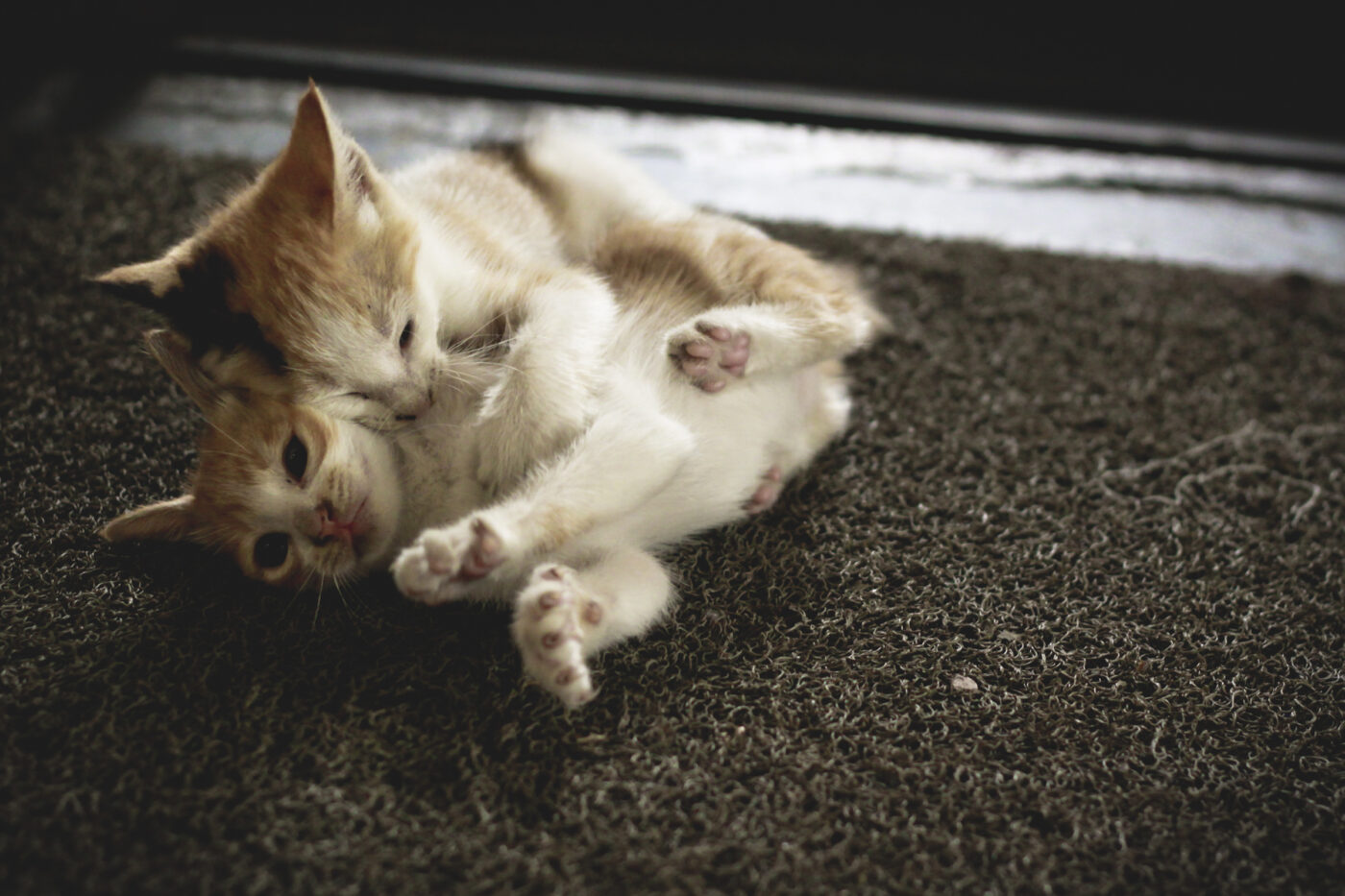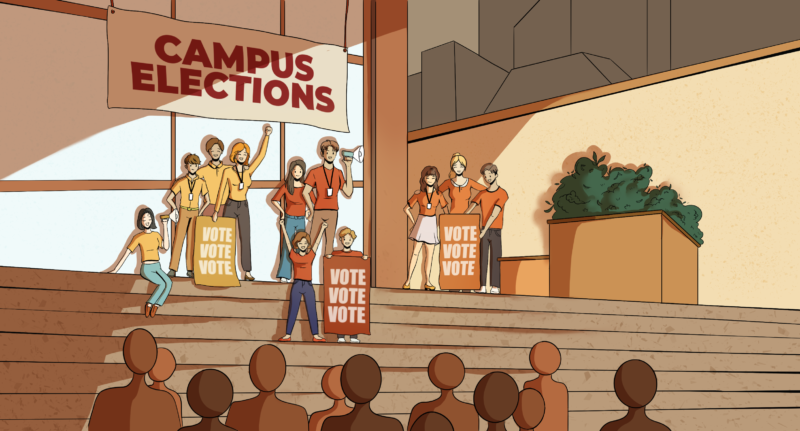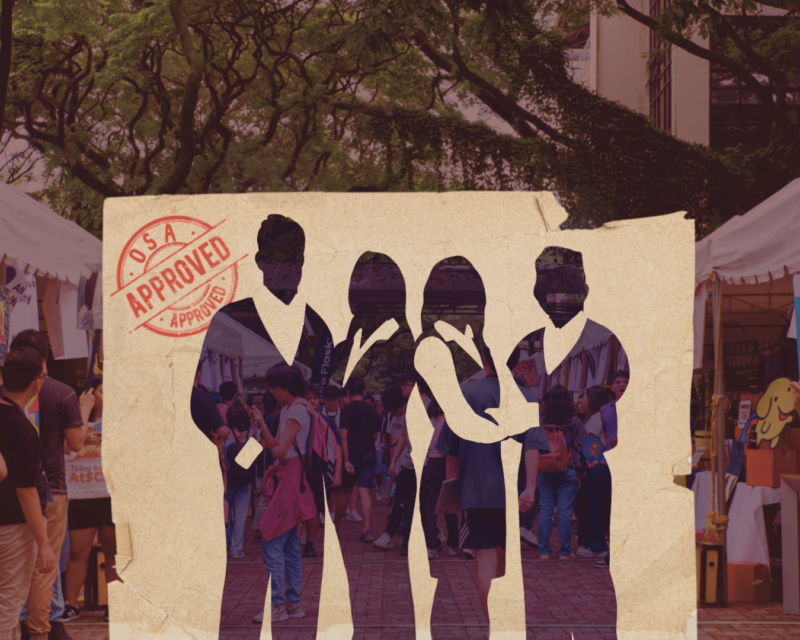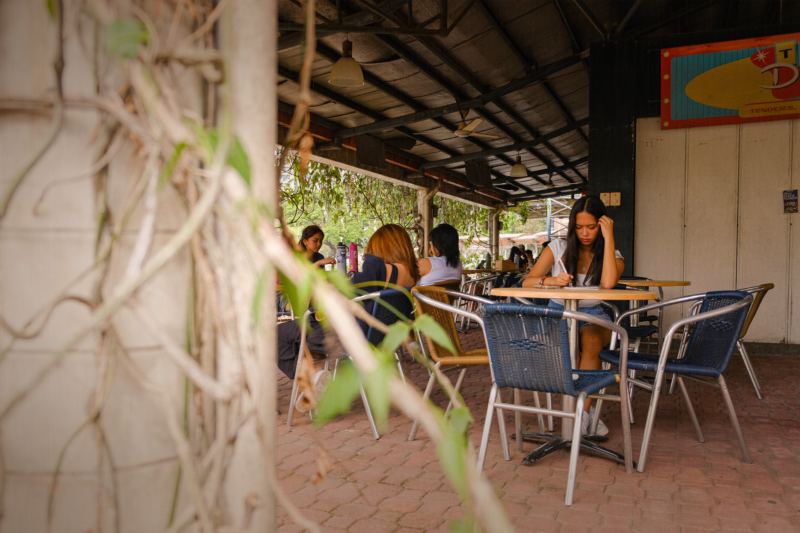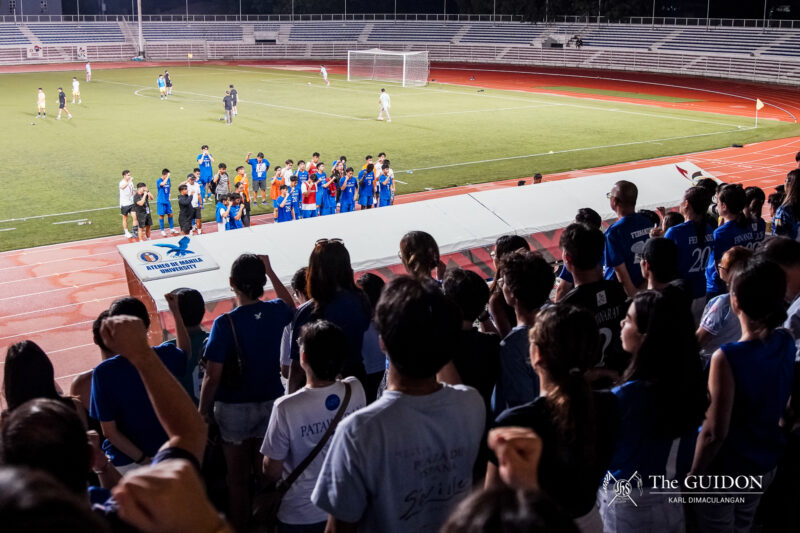The entire Ateneo de Manila University campus is home to around 150 cats. These feline creatures are familiar personalities to students. Some cats are known by their size (Gonzaga Hall’s famous Garfield, for one) or their location (like the Kostkats). While the cats play no integral role in the Loyola Schools (LS) community, they are still a part of Ateneo culture.
The article “Of cats and men,” published in the October 2013 issue of The GUIDON and written by Alex A. Bichara and Roxie Y. Ramirez, discussed how the Ateneo overlooked animal welfare. Until recently, it has been observable that the protection of animal rights is not the utmost priority in the university.
In the past, it seems like how the Ateneo treated cats was little more than pest control. Josephy Almosera, Facilities Management Office Traffic and Security head, says that they would trap the cats and turn them over to the city pound.
The cats may have been sent to the city pound in the hopes that the pound would care for them. However, Anna Cabrera, executive director of the Philippine Animal Welfare Society (PAWS), says that once you send animals to the pound, “you’ve basically shipped [them] off… to be euthanized.”
However, this is not the only unsettling practice in the Ateneo when it comes to how the cats are treated. Last year, rumors of a janitor arrested on the grounds of animal abuse circulated. Almosera clarifies that the janitor in question was part of the Ateneo Multipurpose Cooperative, and that the violation he had committed was putting a cat in a sack. “That, I think, is an isolated case,” Almosera says.
Yet, it is this treatment that the LS community seems to be working on to correct these days.
Feline friends
Cabrera shares that the Ateneo administration has mentioned to her that they have spent so much on vaccinations for students who get bitten by cats. She says that they, at PAWS, find it puzzling why students get bitten. “Cats don’t attack unless you are in close proximity to [them] and you attempt to touch [them],” she says. They will “generally just run away unless you’ve cornered it… So, the chances of you getting bitten by a cat is medyo off-the-charts, unless you go out and look for it yourself.”
The presence of stray cats on campus, Cabrera adds, is due to many factors. The Ateneo campus gives cats access to food—from garbage cans and the hands of students. She also says that the non-spaying and non-neutering naturally contributes to their growing numbers on campus. She explains that the reproduction rate of cats can get out-of-hand, since cats give birth three to four times a year when not spayed or neutered.
Quoting from dog trainer Cesar Millan, Cabrera says, “If a mountain climber climbs up the mountain and then he falls off the mountain, it’s not the mountain’s fault because the mountain’s just being a mountain.” She uses this analogy to explain that the cats on campus are simply being cats.
In an effort to make the campus a safe place for both the students and the cats, the university began to seek the help of PAWS in July of this year. Cabrera shares that during the first meeting she had with university administration, they were “receptive” to the proposition of the Trap-Neuter-Return (TNR) program.
TNR, Cabrera explains, is a program that ensures that stray cats will be neutered to prevent the rise in population. However, PAWS proposed this with some conditions: That the cats should be fed once a day when students are not around, in an off-site away from students and in appropriate portions, and that the university not send the cats to the city pound.
Lastly, Cabrera explains that PAWS has already sent a memorandum of agreement (MOA) to the university. While there has been talk of setting specific programs in place, the MOA has not yet been officially signed. This means that as of this writing, the school has no obligation to comply with the standards that PAWS sets. However, Campus Security and Mobility Office Director Marcelino Mendoza emphasizes that “in principle, [the university has] already been enacting it.” He explains that they are still in the process of reviewing the MOA and are finalizing the coordination with PAWS before they can resolve the issue with finality.
It is important to clarify, however, that the MOA given to the school was not drafted for the Ateneo. As of press time, PAWS has given the Ateneo a copy of their MOA with Barangay Quirino 3-A. Almosera says that they will have to consult with their legal team and check if there are any other necessary provisions.
Student initiatives
It is not just in the administrative offices of the LS where a premium is being put on animal welfare. Students can also be seen at the helm of efforts pushing for the protection of animal rights. In 2010, a petition called “Save the Cats of the Ateneo” was made. The petition was set on stopping the mass deportation of cats to the city pound. Unfortunately, the petition was not successful and was overlooked by the university—but fortunately, the petition’s failure did not discourage students from pushing for change.
Presently, many organizations in the Ateneo advocate for the welfare of animals. These efforts include, but are not limited to, activities like raising awareness, partnering with animal welfare organizations outside the campus and fundraising.
One such organization is Ateneans Guided and Inspired by Love for Animals (Agila). On the beginnings of Agila, President Alex Bichara, shares, “We realized that many LS students are animal lovers and also share our passion for animal welfare.” She says that there were many LS students who were promoting animal welfare solo or in pairs. Bichara points out that their members come from “disparate backgrounds and courses but get to work in subgroups of their choice” while forwarding their common cause.
Agila’s primary objectives—which Bichara points out to be “simple and achievable by us”—can be divided into three points. First, Agila wants its members to educate themselves on animal welfare, responsible pet ownership, and relevant laws and rules. Next, the organization wants to raise awareness of these things, beginning in their spheres of influence: Their own homes, among their friends, at school and even beyond. Finally, Agila wants to prevent the abuse, maltreatment and cruelty, and exploitation of animals, seeks not to neglect or abandon animals and aims to properly care for them.
The “Adopt an Ateneo Kitten” program, one of Agila’s projects, started January of this year and has then since rescued, cared for and found new homes for 12 kittens. The program, however, is only limited to the care of kittens because they are too young to be spayed or neutered.
Agila is not the only organization that incorporates animal welfare and protection in its thrusts. The Ateneo Biological Organization (BOx) includes the protection of both domestic and wildlife animals in their core competencies.
BOx President Jhoana Garces shares, “BOx has had almost yearly collaborations with PAWS and other animal welfare organizations.” These collaborations, she says, have culminated into the very successful Animal Welfare Week, held last July 28 to August 1, in partnership with PAWS, the Compassion and Responsibility for Animals Welfare Philippines and the Bureau of Animal Industry.
“For wildlife, BOx has raised at least P30,000 for various conservation groups, particularly Balyena.org,” Garces says, “for supporting animal conservation efforts and research.”
In line with their competencies, Garces claims, BOx has elected animal welfare ambassadors who are tasked “to bridge the LS community to animal welfare organizations outside the Ateneo campus… and provide ample opportunities for volunteers to participate in the activities of the promotion of proper treatment and the wellness of animals, especially in the Philippines.”
The growing popularity of animal welfare advocates in the LS is not limited to the student organizations, however. Last May 20, the Facebook page “Cats of Ateneo” was created. The page, inspired by the “Humans of New York” Facebook page, provides an avenue for members of the Ateneo community to appreciate the cats on campus.
According to Cats of Ateneo Administrator Nikki Solinap, the page aims to share cat stories from Ateneans and “hopefully inspire people to love and take care of our cats even more.”
For Ana Batiller, another administrator of “Cats of Ateneo,” their page is a way to make the cats’ presence felt by the school. For her, “Ateneo wouldn’t be the same without them.” She also shares, “I just want to show the school that the cats are just as much a part of Ateneo as the students and the faculty.”
Steps
Today, the Ateneo is no longer a stranger to discourse on animal welfare and animal rights. This year has seen many developments in the cause: It was in January when the independently-organized Ateneo Animal WellFair—an event to raise awareness on animal rights, welfare laws and responsible pet ownership—happened. It was in July when Agila was formed. BOx, Musmos, the Ateneo Environmental Science Society and other student groups have also recently been proactive in their pursuit of animal welfare. Now, the Ateneo is trying to work with PAWS to enact the TNR program.
Clearly, awareness and action for feline and animal welfare has significantly grown more widespread over the past year. However, there are many who question if these efforts are enough.
Until an official policy with a clear written agreement can be in place, the welfare of the campus cats remains uncertain. While the students’ efforts have been strong, they can only go so far. The welfare of the “cateneans” is a multifaceted issue. There are many things to consider. It is an economic issue (with thousands of pesos spent on vaccines and neutering), an administrative issue (with layers of bureaucracy to hurdle for a policy to be approved) and a feasibility issue as well.
Needless to say, the Ateneo is taking the issue one step at a time, with each step getting closer to a campus that is safer for both cat and Atenean.
Editor’s Note: Alex A. Bichara is a writer for The GUIDON Inquiry Staff. Nikki G. Solinap is a member of the Graphic Design Staff.
Updated on November 25, 2014 at 9:55 PM.

